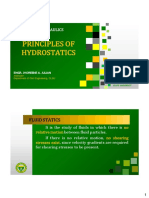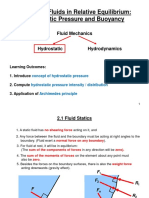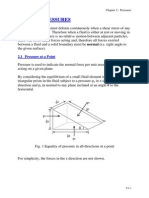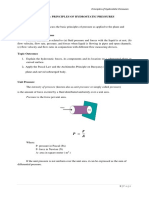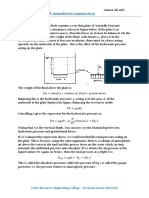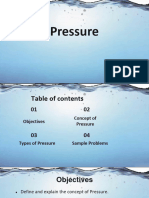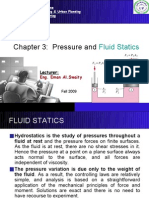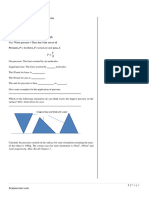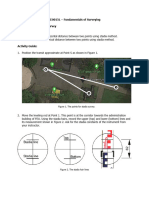0% found this document useful (0 votes)
79 views15 pagesModule 2.1 - Pressure of Fluids at Rest
This document covers the principles of pressure in fluids at rest, including the definition of pressure, its measurement, and characteristics. It explains the relationship between absolute pressure and gauge pressure, introduces manometers for measuring fluid pressure, and provides examples and exercises related to pressure calculations. Key concepts include the dependence of pressure on fluid depth, density, and gravitational acceleration.
Uploaded by
Sanie HeeseungCopyright
© © All Rights Reserved
We take content rights seriously. If you suspect this is your content, claim it here.
Available Formats
Download as PPTX, PDF, TXT or read online on Scribd
0% found this document useful (0 votes)
79 views15 pagesModule 2.1 - Pressure of Fluids at Rest
This document covers the principles of pressure in fluids at rest, including the definition of pressure, its measurement, and characteristics. It explains the relationship between absolute pressure and gauge pressure, introduces manometers for measuring fluid pressure, and provides examples and exercises related to pressure calculations. Key concepts include the dependence of pressure on fluid depth, density, and gravitational acceleration.
Uploaded by
Sanie HeeseungCopyright
© © All Rights Reserved
We take content rights seriously. If you suspect this is your content, claim it here.
Available Formats
Download as PPTX, PDF, TXT or read online on Scribd
/ 15




